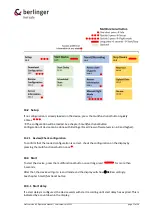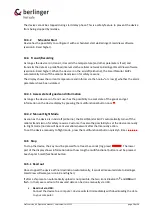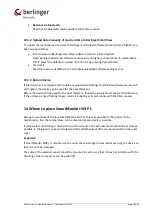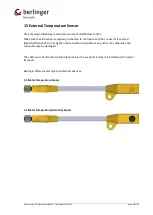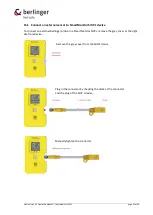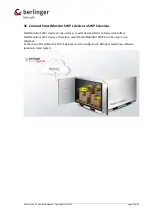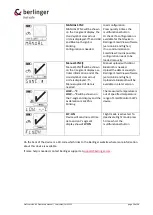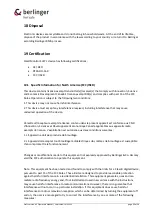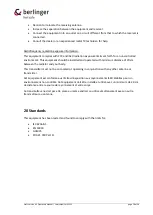
Draft version 02 Operatots Manual / SmartMonitor SHIP L
page 25 of 26
18
Disposal
Electronic devices are recyclable and do not belong in household waste. At the end of its lifetime,
dispose of the product in accordance with the law according to your country or return it to Berlinger
according Berlinger RMA process.
19
Certification
SmartMonitor SHIP L device has following certifications:
•
CE / RED
•
RTCA DO-160
•
FCC / ISED
19.1
Specific Information for North America (FCC/ISED)
This device contains licence-exempt transmitter(s)/receiver(s) that comply with Innovation, Science
a
nd Economic Development Canada’s licence
-exempt RSS(s) and complies with part 15 of the FCC
Rules. Operation is subject to the following two conditions:
1. This device may not cause harmful interference.
2. This device must accept any interference received, including interference that may cause
undesired operation of the device.
L’émetteur/récepteur exempt de licence contenu dans le présent appareil est con
forme aux CNR
d’Innovation, Sciences et Développement économique Canada applicables aux appareils radio
exempts de licence. L’exploitation est autorisée aux deux conditions suivantes :
1. L’appareil ne doit pas produire de brouillage.
2. L’appareil doit ac
cepter tout brouillage radioélectrique subi, même si le brouillage est susceptible
d’en compromettre le fonctionnement.
Changes or modifications made to this equipment not expressly approved by Berlinger & Co. AG may
void the FCC authorization to operate this equipment.
Note: This equipment has been tested and found to comply with the limits for a Class B digital device,
pursuant to part 15 of the FCC Rules. These limits are designed to provide reasonable protection
against harmful interference in a residential installation. This equipment generates, uses and can
radiate radio frequency energy and, if not installed and used in accordance with the instructions,
may cause harmful interference to radio communications. However, there is no guarantee that
interference will not occur in a particular installation. If this equipment does cause harmful
interference to radio or television reception, which can be determined by turning the equipment off
and on, the user is encouraged to try to correct the interference by one or more of the following
measures:







